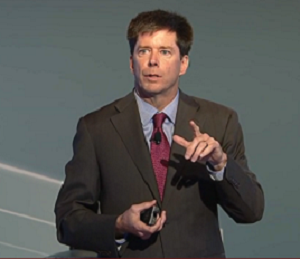News
Oracle Solaris Gets Built-In Software-Defined Networking
Meet the modern OS, a 'cloud platform' with integrated virtualization and SDN.
Solaris isn't just an OS anymore -- it's a "modern cloud platform" with integrated virtualization that now features built-in support for nascent software-defined networking (SDN) technology.
The Unix OS formerly owned by Sun Microsystems has been remade into a new-age "engineered for cloud" catch-all offering that comes with a full distribution of OpenStack, the open source Infrastructure-as-a-Service (IaaS) component framework.
The new rendition released this week by Oracle Corp. as Oracle Solaris 11.2 "is a complete, integrated and open platform engineered for large-scale enterprise cloud environments," the company said. "It combines OpenStack, SDN technology, clustering and virtualization with a proven enterprise-class OS, all in a single product."
At a presentation in New York, Mark Hurd, president, and John Fowler, executive vice president, introduced the new OS, released in beta. Fowler said the new version is "a huge one for us," with "500 or more projects or enhancements plus a number of major innovations."
One of those innovations is what Oracle calls application-driven SDN, featuring a socket-level flow API that lets an app prioritize its own traffic throughout a network, which the company said leads to better performance and minimizes resource-contention slowdowns. "This application-driven software defined networking, from application through to storage, along with administrative-driven flows, help to ensure service level agreements are maintained within a data center or cloud environment," according to release notes.
 Oracle's John Fowler discusses Oracle Solaris 11.2 in New York
Oracle's John Fowler discusses Oracle Solaris 11.2 in New York
(source: Oracle webcast screenshot)
Fowler explained more about what SDN is and how Oracle is using it.
"Software-defined networking today -- obviously a very big buzzword -- fundamentally allows you to set up the transport and switching architecture for an arbitrary topology of applications using, hopefully, dumb network switches," Fowler said. "What we've done at Oracle in Solaris 11.2 is that we've integrated in, first of all, an elastic virtual switch plus all the technology to create VXLANs over a network. What this allows you to do is to have -- either on a single machine or a completely distributed set of machines across an arbitrary geographic region -- the logical topology of your application, and be able to move it around. And you can use dumb network switches to do this. So you can have a very simple transport infrastructure for your network and change your applications and change your capabilities."
Fowler admitted that Oracle isn't the only company to leverage such SDN elements, but maintained the company has improved upon the basic SDN technology.
"But what we've done in 11.2 is that we've extended it up to the application. We're exposing in Java and to the application level that applications can define their flows -- their L7 flows -- so you can have and allow the application itself to define how it actually uses the network, and therefore automate cloud deployments. So this is a built-in capability in 11.2 that's unique for cloud deployment."
Oracle said the new release also includes better lifecycle management capabilities and attained new performance levels with Java, Oracle Database and in virtualized environments.
Version 11.2 is the first "point" update since 11.1 was released in October 2012. Solaris 11 was released in November 2011. The new release is expected to be generally available later this year. Meanwhile, it's available for download and evaluation.
About the Author
David Ramel is an editor and writer at Converge 360.